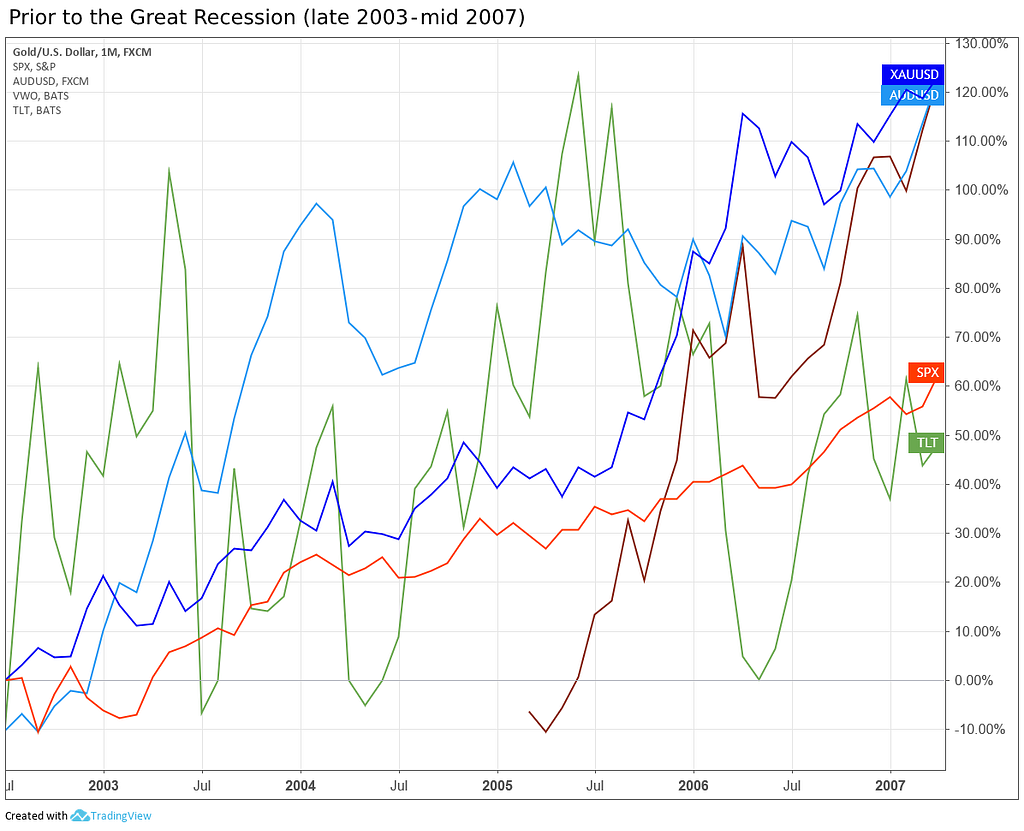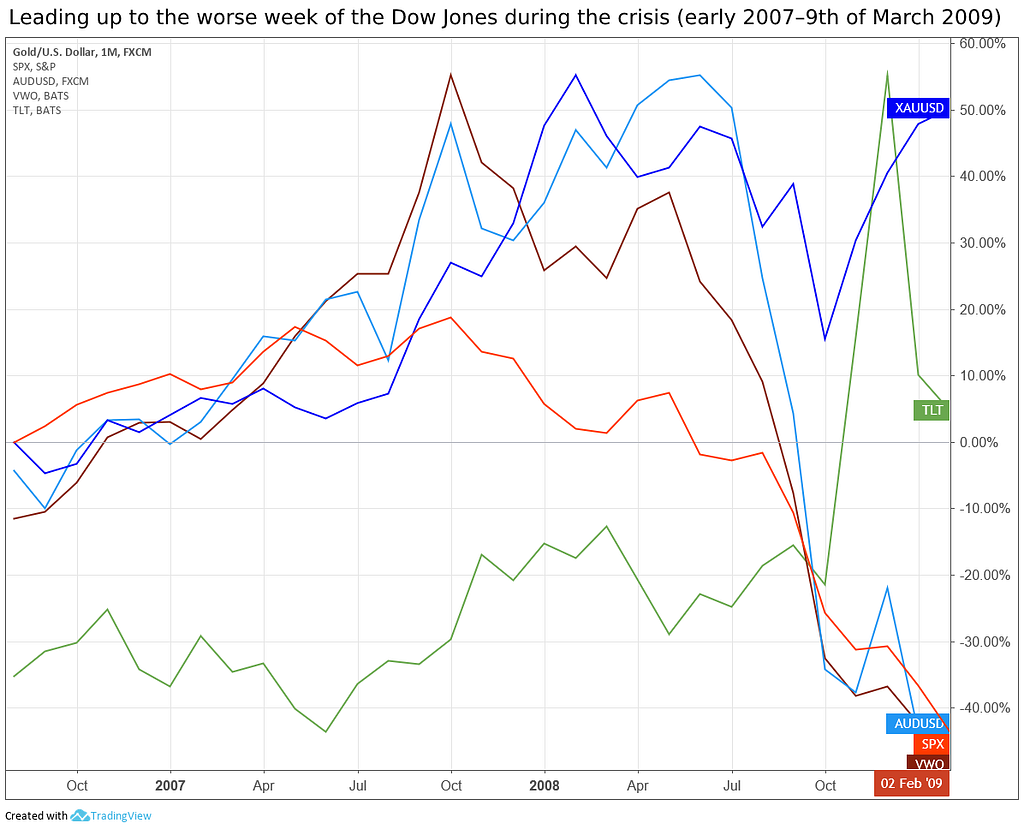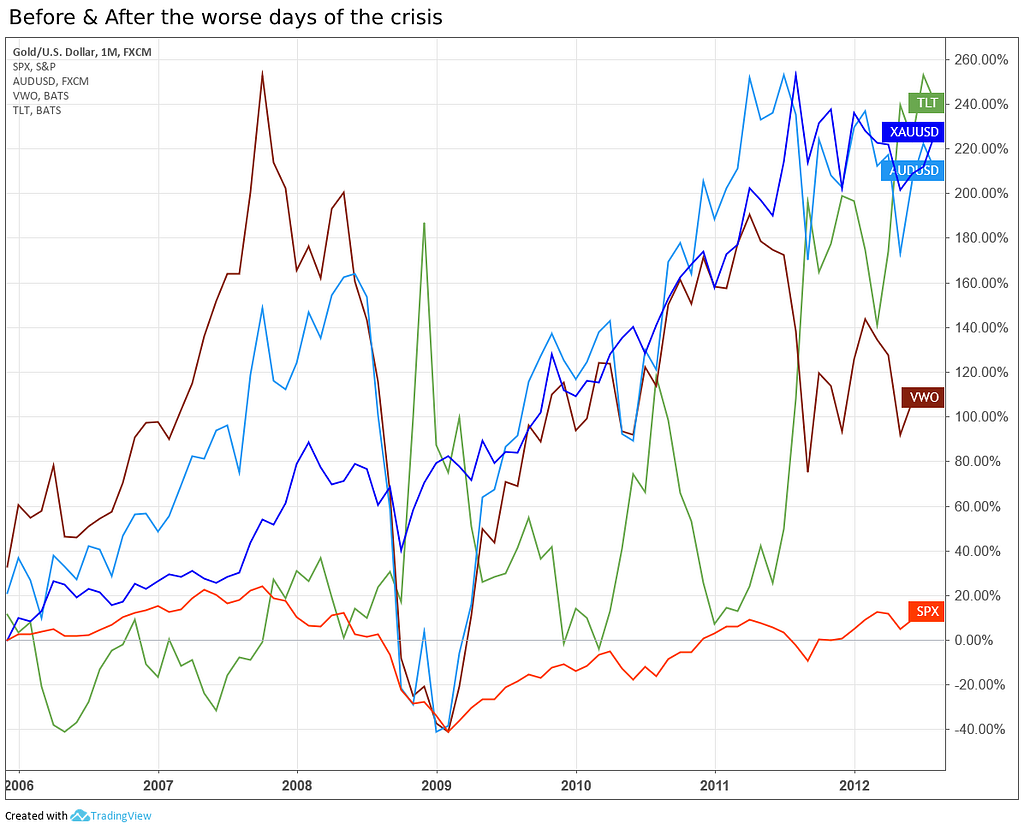Latest news about Bitcoin and all cryptocurrencies. Your daily crypto news habit.
You may have noticed that I have been MIA for the past few weeks, but fear not, I am still hanging around (although very busy!) and have been involved in the Cryptocurrency space as much as ever. In the midst of the Great Recession (the economic downturn during the late 2000s and early 2010s), Satoshi Nakamoto released the now-famous paper, ‘Bitcoin: A Peer-to-Peer Electronic Cash System’. Satoshi proposed ‘a purely peer-to-peer version of electronic cash that would allow online payments to be sent directly from one party to another without going through a financial institution’.
It is widely accepted that Satoshi was unhappy with the economic situation at the time (centralized financial institutions, bank bail-outs, etc.) which led to the inception of Bitcoin (in 2008) with its networking ‘going live’ on 3rd of January in 2009. The first block (genesis block) included the following message ‘The Times 03/Jan/2009 Chancellor on brink of second bailout for banks’, taking aim at Alistair Darling who was preparing a £500Bn rescue package for UK Banks.
In this post, I won’t only talk about Bitcoin and Cryptocurrencies (as I have done previously) but take a step back and dive deeper into global economics, the looming financial crisis and discuss what could happen to Bitcoin when they face the first financial crisis since their birth. In a follow-up post, I will discuss what will happen to Cryptocurrencies, as a whole, in such event.
What is a Financial Crisis and how is it caused?
In a financial crisis, asset prices see a steep decline in value, businesses and consumers are unable to pay their debts and financial institutions experience liquidity shortages. A financial crisis is often associated with a panic or a bank run where investors sell off assets or withdraw money from savings accounts because they fear that the value of those assets will drop if they remain in a financial institution.
A financial crisis can occur if institutions or assets are overvalued, and it can be exacerbated by irrational investor behavior. A rapid string of selloffs can further result in lower asset prices or more savings withdrawals. If left unchecked, a crisis can cause an economy to go into a recession or depression.
It’s human nature to always strive for more and the capitalistic nature of our economy is built in such way that to facilitate this constant growth, more often than not, we keep piling on debt. This happens more-so during a ‘euphoric market’, in which retail and institutions often overestimate their ability to pay back their loans.
A market crash, and subsequently a financial crisis, occurs when piling on this debt is no longer sustainable and everything comes crumbling down like a house of cards.
There are many resources out there on this subject, so I won’t go into further details but rather focus on how Bitcoin will reach once the next financial crisis hits — and it’s a matter of when, not if.
Research Data
In order to back this post with facts, I would like to list below the different assets, used in the charts that follow, alongside a brief description and the reason behind their selection.
The assets
- GOLD (XAUUSD, Blue)
Gold price is widely followed in financial markets around the world. Gold was the basis of economic capitalism for hundreds of years until the repeal of the Gold standard, which led to the expansion of a flat currency system in which paper money doesn’t have an implied backing with any physical form of monetization. Gold quoted in US Dollars, which is the common yardstick for measuring the value of Gold across the world.
Besides the fact that Bitcoin has been numerous times called ‘digital gold’, gold is vastly considered a safe heaven during economic turmoil. It usually has an inverse correlation against the United States Dollar (USD) and is an excellent asset to track.
- Standard & Poor’s 500 Index (SPX, Orange)
Standard and Poor’s 500 Index is a capitalization-weighted index of 500 stocks. The index is designed to measure performance of the broad domestic economy through changes in the aggregate market value of 500 stocks representing all major industries. The index was developed with a base level of 10 for the 1941–43 base period.
The Standard & Poor’s 500 Index (S&P 500) is the most commonly used benchmark for determining the state of the overall (US) economy and makes perfect sense to be included in any performance comparison chart.
- Australian Dollar vs United States Dollar (AUDUSD, Cyan)
The currency pair tells indicating how many Australian Dollars (the quote currency) are needed to purchase one United States dollar (the base currency)
This ‘major pair’ is good comparison candidate due to the fact that during a euphoric market, ‘risky currency trades’ do well, as they usually have higher interest rates (which implies higher growth) and are directly linked to commodities. Australia is the largest coal and iron ore exporter, and therefore the ‘plight of its currency is heavily dependent on commodity prices’.
- VanGuard FTSE Emerging Markets ETF (VWO, Brown)
This ETF invests in stocks of companies located in emerging markets around the world, such as China, Brazil, Taiwan, and South Africa. It has high potential for growth, but also high risk; share value may swing up and down more than that of stock funds that invest in developed countries, including the United States.
- iShares 20+ Year Treasury Bond ETF (TLT, Green)
This ETF seeks to track the investment results of an index composed of U.S. Treasury bonds with remaining maturities greater than twenty years.
Generally speaking, bonds are a ‘safe play’ during recession as interest rates decrease whereas bonds value rise. However, not all bonds are made equal. The ‘safe play’ applies to bonds with a good credit rating, such as, Triple-AAA Corporate Bonds. This ETF consists of U.S Treasury Bonds which have a very good credit rating.
The charts
The 3 charts below (with different timeframes), show a snapshot of the asset percentage change over a period of years which I will be referring to in the following sections.
So… What will happen to Bitcoin?
Scenario 1
During a ‘euphoric market’, retail and institutions are more risk-seeking, investing in assets that have a higher yield potential. As shown in Figure A, high(er) risk assets, such as the VanGuard FTSE Emerging Markets ETF and the Australian Dollar, saw great returns. You may have also noticed that gold, also had similar returns, and this was partly due to the ‘Commodities Supercycle’.
However, there’s no doubt that the investments to first get liquidated are the ones that carry the highest risk; institutions and retail both require cash-flow during a financial crisis and the most logical investments to get sold are the highest risk ones. Alternatively, they might seek to minimize risk by investing into ‘safer’ investments, such as, the iShares 20+ Year Treasury Bond ETF, Gold, etc.
In Figure B & C, you can clearly see that the assets that got hit hardest during the economic turmoil, were the riskier ones. The VanGuard FTSE Emerging Markets ETF and Australian Dollar taking a ~80% hit (from their all-time-high between 2006 and March 2009). In comparison, ‘safer assets’ took a hit of ~30%.
Now that’s out of the way, it would come as no surprise that Bitcoin could get into trouble during a financial crisis, as it can be considered a high risk investment, due to:
- Market Risk — Bitcoin has only been around for nearly 10 years and still remains a highly speculative asset that is purely driven by supply and demand. The only reason why Bitcoin holds value today, is because of the growth expectation and possible future real use cases.
- Regulatory Risk — As Bitcoin is a step away from the ‘traditional financial system’ and has the ability to be (more efficiently) used for nefarious purposes, governments agencies have been trying to find a way to regulate it. However, due to the nature of Bitcoin, this has proved to be extremely hard and the ‘the lack of uniform regulations about bitcoins (and other virtual currency) raises questions over their longevity, liquidity and universality.’
- Security Risk — Given the nature of the blockchain, where all transactions are final and irreversible, security is a great risk. Once Bitcoins have been transferred from Party A to Party B, the only way for have them returned back, is for Party B to explicitly refund them. Since Bitcoin-related activities (wallets, exchanges, etc.) live in the digital world, they are open to hackers, malware and operational errors. For example, once a malicious actor gains necessary access on an exchange to illegally transfer Bitcoins from the exchange to his own wallet, there’s no way to reverse such action. There have been number of exchange hacks, most notably, the Mt. Gox hack in 2014, which led to losses in excess of $450 million at the time.
- Insurance Risk — Depending on jurisdiction, some traditional investments are insured through a number of schemes, such as the Securities Investor Protection Corporation (US), the Federal Deposit Insurance Corporation (US) or the Financial Services Compensation Scheme (UK). Most exchanges (and accounts) do not have such federal/government protection and are mostly self-insured.
- Fraud Risk — Since Bitcoin is pseudonymous and has a low entry barrier, it carries a larger risk of being used fraudulently. Scammers and fraudsters have a much easier time selling ‘false’ Bitcoins, in comparison to, a bond or a stock.
Scenario 2
Gold has long been considered a ‘safer asset’ during times of economic turmoil and this can be proven by the charts above. Gold took a hit of ‘just’ 30% during The Great Recession, in comparison with other assets that took losses of over 80%.
Bitcoin has been long-called ‘digital gold’, for a number of reasons. Although Bitcoin set out to become a ‘digital currency’, it also performs exceptionally well as a store of value. It shares a number of characteristics with gold, such as:
- Scarcity —It’s quite hard to gauge how much gold is in circulation and what the total supply could be, but there’s no denying that gold is scarce. Similarly, there can ever be 21M Bitcoins minted (as of today, we’ve minted ~17.5M Bitcoins).
- Durability — Although gold can wear slightly if not handled properly, both gold and Bitcoin are extremely durable. Gold doesn’t rust nor corrode and Bitcoin can’t be destroyed nor altered, even if the internet was to disappear. They can both stand the test of time with no impact to their composition.
- Fungibility — The property of a good or a commodity whose individual units are essentially interchangeable. One ounce of Gold will always be equal to another ounce of gold (given the same purity) and similarly one bitcoin is always equal to another bitcoin.
In addition, Bitcoin has (even better) properties, that gold doesn’t. These include:
- Storage — Bitcoin is digital, gold is physical. Storing Bitcoin is extremely easy, whereas, storing gold isn’t as straight forward (nor safe). Many gold investors use third-party vaults, bringing cost and risk. In addition, carrying gold along is quite inconvenient as it has some fixed allowance limits and also creates high possibilities of theft. On the contrary, Bitcoin is stored in a digital wallet and has no physical space requirement. Digital wallets can easily be restored using a seed phrase, in the event they are no longer accessible (i.e. new phone).
- Security —This comes down to how securely an individual stores his gold (physically) or Bitcoin (digitally). Obviously, it’s much easier to securely store Bitcoin than gold and that’s why third-parties are often involved in gold storage, which brings greater risk.
- Portable — Bitcoin can be ‘carried around’ much easier than gold. Gold is inconvenient to carry around (fixed allowance limits) but also comes with a greater risk of theft. On the other hand, Bitcoin can be carried around with just your phone. Portability brings a host of other benefits, which I will discuss below.
- Divisible —Although gold can be divided, it can’t be divided easily nor in a highly precise manner. On the other hand, Bitcoin can easily be divided down to 8 decimal places (with possibility for more).
- Method of Payment —As noted above, Bitcoin set out to be a ‘digital currency’ and can still perform pretty well as such (despite a few technical limitations which are being worked on). Although gold can be traded electronically (exchanges, etc.) it can’t really be considered a currency as you can’t just rock up to a grocery shop and pay with gold, whereas, you could easily do that with Bitcoin (given necessary framework is in place).
- Finite Supply— Although, in theory, gold is scarce, there is a possibility, that more gold can be mined (undiscovered gold deposits, meteor mining, etc.). On the other hand, Bitcoin will only ever have 21M coins minted, period.
Where does all this leave us?
In my opinion, there are two very important factors that will determine which scenario will play out once this financial crisis hits — liquidity and investor confidence. At this point in time, neither of these seem to be adequate, so I’m inclined towards the first scenario unfolding once the economic turmoil hits.
Having said that, there are major developments in the Cryptocurrency space (and Bitcoin in particular), such as, the Bakkt launch, VanEck/SolidX Bitcoin ETF Proposal, well-defined regulation (for individuals and institutions) and more. If most/all of these developments are in place once the next recession hits, I believe Bitcoin will thrive.
How many claps does this post deserve? How about a follow?
If you enjoyed this post, please feel free to 👏 clap 👏 many times (you know you want to!), give my blog a 👣 follow 👣 and 🤲 share 🤲 with your friends. There’s a limit of 👏 50 claps 👏 you can give to each post, so I urge you not to try and exceed that limit… you might break Medium!
Speaking of which…
If I still have your attention, please leave a comment and let me know what else you would like to see me writing about. You can find links to my social media and sign up to my newsletter below.
You can also show your support by donating to the following address:ETH: 0x4c7195E074cf0Ab6F77Bdb7C97Fd2567066Bb712
Disclaimer: All information and data on this blog post is for informational purposes only. My opinions are my own. I do not provide personal investment advice and I am not a qualified licensed investment advisor. I make no representations as to the accuracy, completeness, suitability, or validity, of any information. I will not be liable for any errors, omissions, or any losses, or damages arising from its display or use. All information is provided as is with no warranties and confers no rights.
The Looming Financial Crisis: What Will Happen To Bitcoin? was originally published in Hacker Noon on Medium, where people are continuing the conversation by highlighting and responding to this story.
Disclaimer
The views and opinions expressed in this article are solely those of the authors and do not reflect the views of Bitcoin Insider. Every investment and trading move involves risk - this is especially true for cryptocurrencies given their volatility. We strongly advise our readers to conduct their own research when making a decision.












